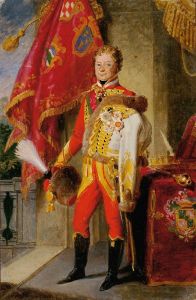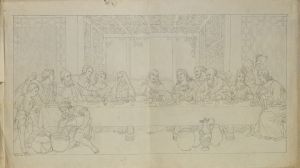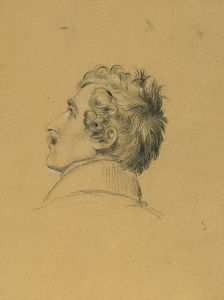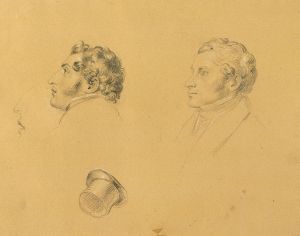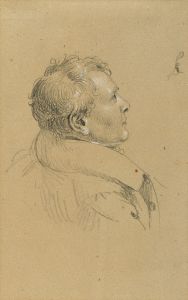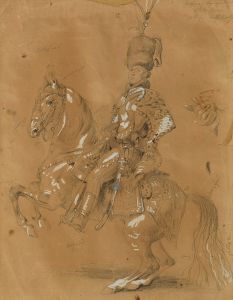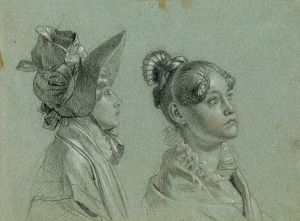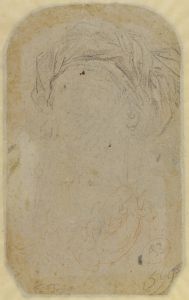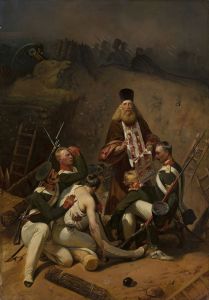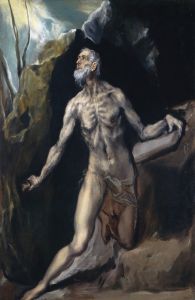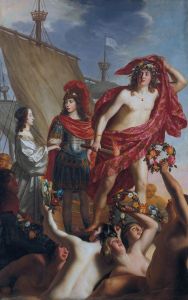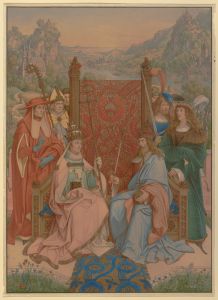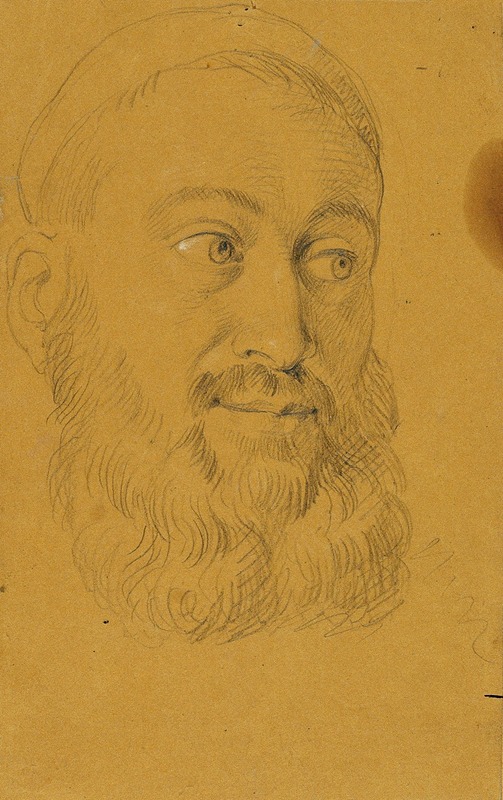
Porträtstudie zu Rudolf von Habsburg und der Priester
A hand-painted replica of Johann Peter Krafft’s masterpiece Porträtstudie zu Rudolf von Habsburg und der Priester, meticulously crafted by professional artists to capture the true essence of the original. Each piece is created with museum-quality canvas and rare mineral pigments, carefully painted by experienced artists with delicate brushstrokes and rich, layered colors to perfectly recreate the texture of the original artwork. Unlike machine-printed reproductions, this hand-painted version brings the painting to life, infused with the artist’s emotions and skill in every stroke. Whether for personal collection or home decoration, it instantly elevates the artistic atmosphere of any space.
Johann Peter Krafft's "Porträtstudie zu Rudolf von Habsburg und der Priester" is a notable work by the Austrian painter, who was renowned for his historical and genre paintings. Krafft, born in 1780 in Hanau, Germany, and later becoming a prominent figure in the Austrian art scene, was known for his detailed and expressive style, which often captured significant historical and cultural narratives.
The painting "Porträtstudie zu Rudolf von Habsburg und der Priester" is a study or preparatory work related to a larger composition that Krafft was working on. The subject of the painting, Rudolf von Habsburg, was the first King of Germany from the Habsburg dynasty, reigning from 1273 until his death in 1291. Rudolf is a significant historical figure, known for his role in re-establishing the Holy Roman Empire's influence and laying the foundations for the Habsburg dynasty's future prominence in European politics.
The title of the painting suggests a scene involving Rudolf von Habsburg and a priest, which could potentially reference a historical or legendary event from Rudolf's life. Such scenes were common in 19th-century historical painting, where artists sought to capture pivotal or symbolic moments from history. Krafft's interest in historical subjects is well-documented, and his works often reflect a meticulous attention to historical detail and a deep engagement with the narratives of the past.
Krafft's artistic style is characterized by its clarity, precision, and a certain romanticism, which was typical of the period. His works often feature strong compositions and a keen sense of drama, achieved through his use of light and shadow, as well as his ability to convey emotion and character through facial expressions and body language. These elements would likely be present in "Porträtstudie zu Rudolf von Habsburg und der Priester," even though it is a study rather than a finished piece.
The painting is part of Krafft's broader oeuvre, which includes other historical works such as "The Battle of Leipzig" and "The Entry of Emperor Franz I into Vienna." His works were well-received in his time, and he held several prestigious positions, including that of director of the Belvedere Gallery in Vienna. Krafft's contributions to art were recognized by his contemporaries, and he played a significant role in the development of Austrian painting during the 19th century.
While specific details about "Porträtstudie zu Rudolf von Habsburg und der Priester" might not be extensively documented, the painting fits within the context of Krafft's career and his interest in historical themes. It reflects the broader trends of the time, where artists were increasingly interested in exploring national history and identity through their work. Krafft's paintings, including this study, continue to be appreciated for their historical significance and artistic merit.





